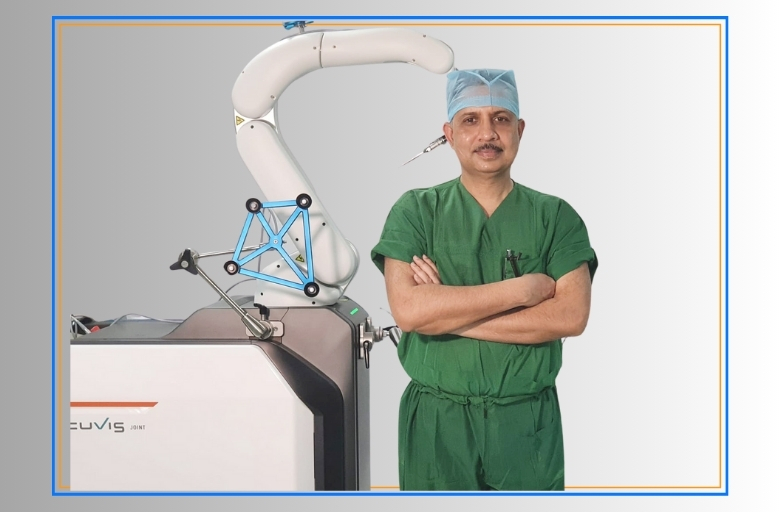


Total knee replacement is a common yet life-changing orthopedic surgery that includes implanting the knee joint to enhance the quality of life of individuals suffering from end-stage osteoarthritis or other physical problems.
In recent years, the age group getting this treatment has decreased. With younger patients receiving Robotic Total Knee Replacement surgery more frequently. Complete knee arthroplasty or complete knee replacement are other names for this operation.
For many surgeons, the classic approach of knee replacement, also known as the conventional procedure, has been the preferred option of therapy for several decades. This procedure employs X-ray pictures and depends completely on the surgeon’s visual judgment and the use of direct manual surgery.
Traditional complete knee replacement surgery entails creating a 10- to 12-inch-long incision using normal surgical instruments and equipment. While this operation has helped many people over the years, it is intrusive, unpleasant, and takes a long time to recover from. Traditional knee replacement surgery relies on vision and human discretion, and the approach is based on bone.
The traditional method of knee replacement has limitations, which include:
A virtual representation of the patient’s knee is used to generate a preoperative plan for robotic knee replacement surgery. The surgeon uses a computer to control a programmed robotic arm while repairing a broken knee component.
The procedure uses a robotic arm to replace the damaged component of the knee while preserving the patient’s good bones and surrounding tissues. The joint is then fixed by an implant, allowing it to restore its motion and range of motion.
This novel method has several advantages that result in a significantly better experience and healing period for the patient.
Dr. Shekhar Srivastav, an orthopedic surgeon demonstrated how robotic joint replacement surgery may increase accuracy and improve patient outcomes. He will determine if you are a good candidate for Robotic Knee Replacement Surgery.
Patients with osteoarthritis are also suitable candidates for robotic knee surgery. It is when their disease has not advanced significantly. In some individuals, the swelling and stiffness around the knee, along with discomfort, become severe, limiting normal mobility and everyday activities.